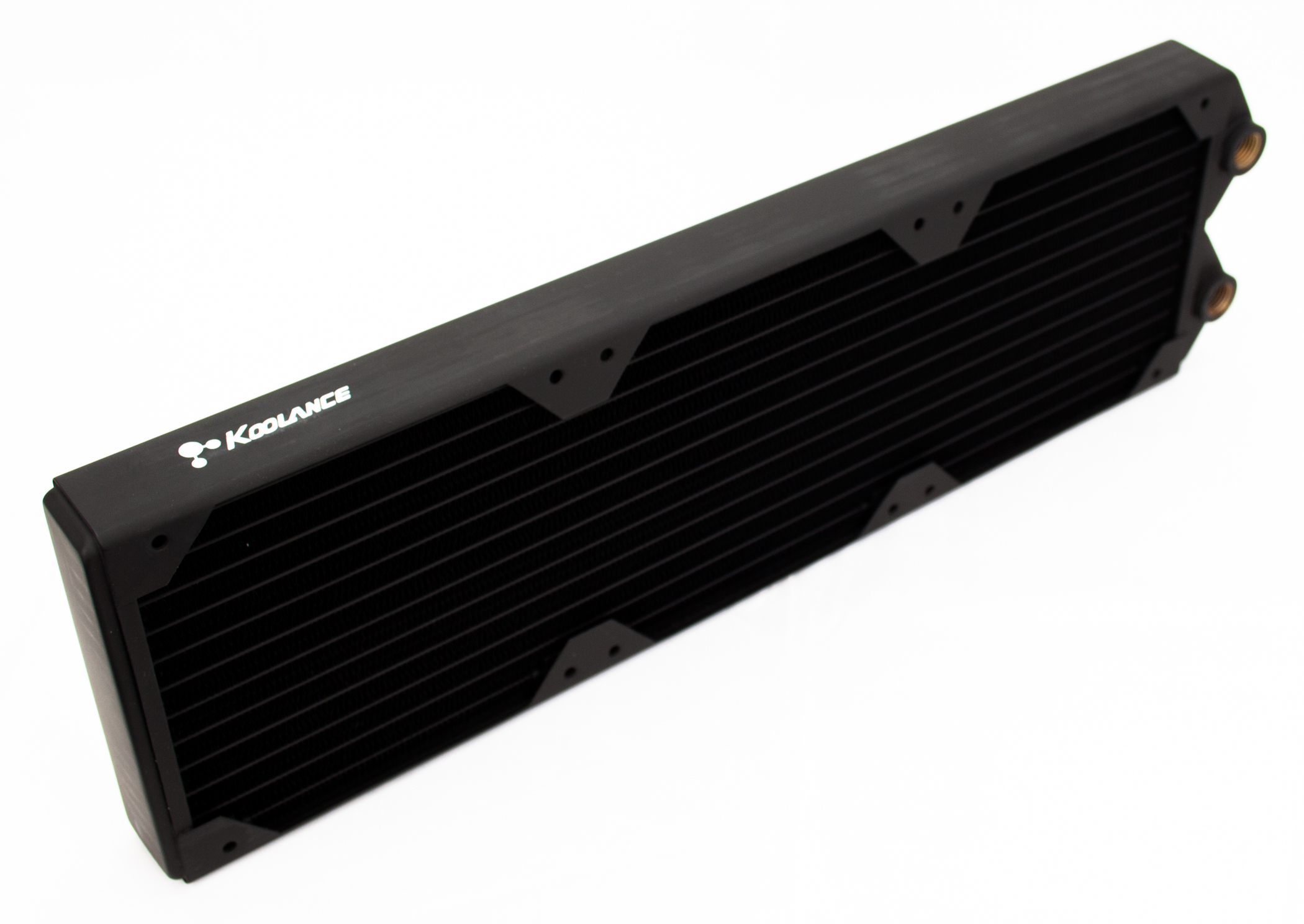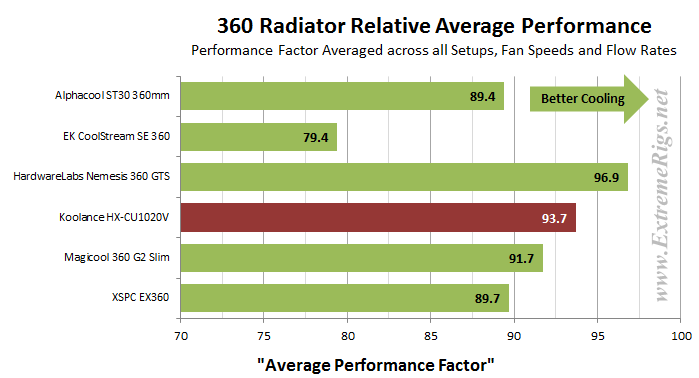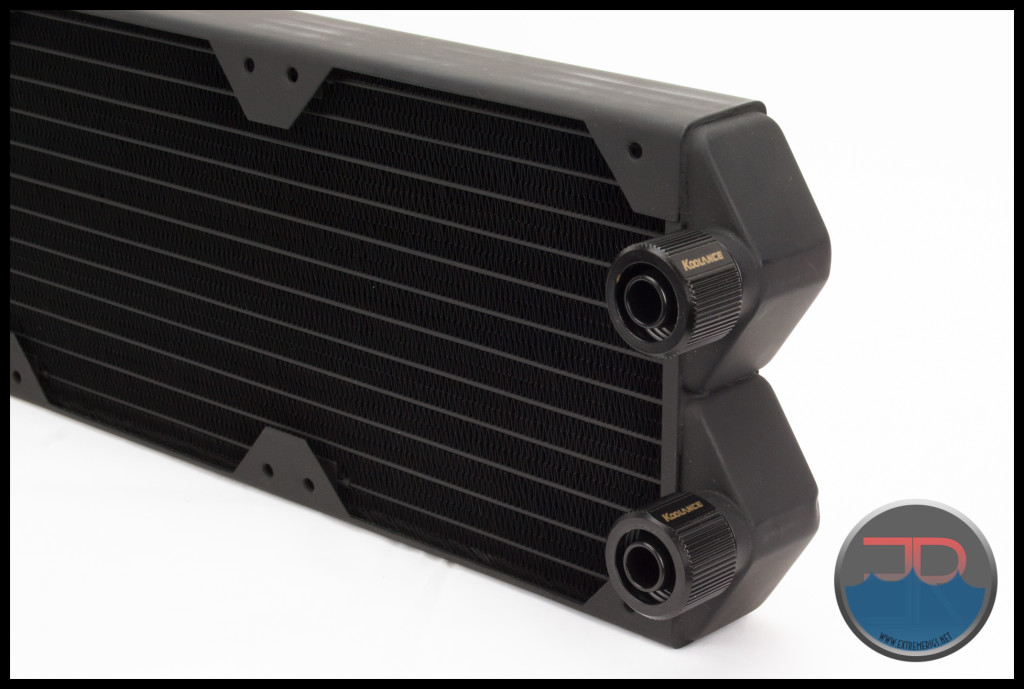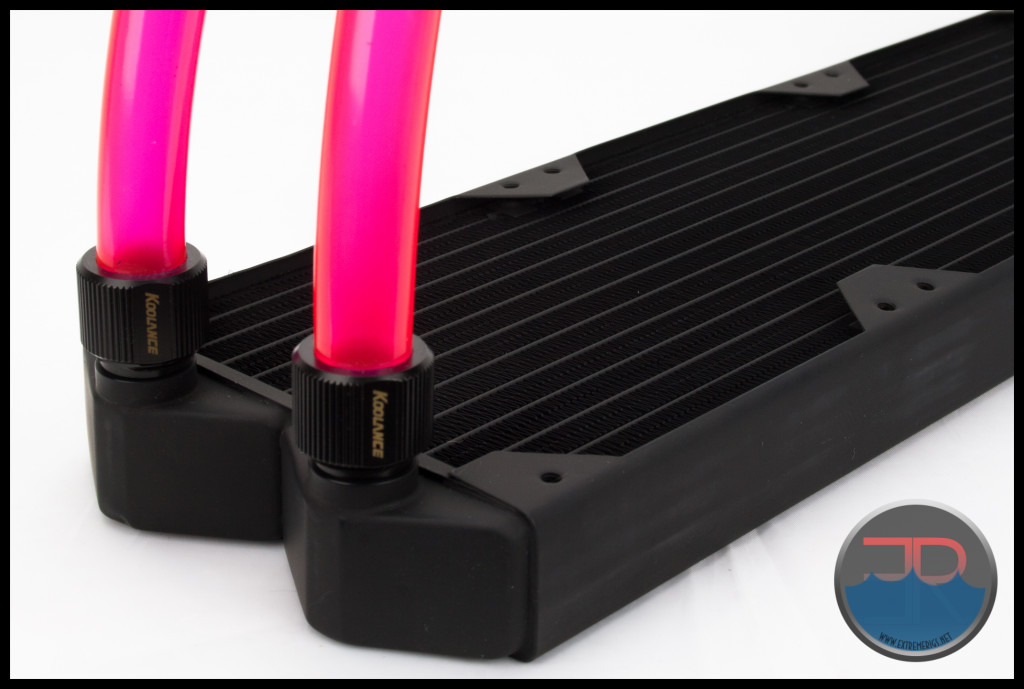Thermal Performance
Thermal Performance scores are derived from the relevant Performance Factor scores. We set this scale with 72.5% and below as the 0 mark, with each 2.5% increase from 72.5% in relative performance adding 0.5 to the awarded performance score.
The Bold Scores are based on performance comparisons of only the slim 360mm Rads. On the second line is the score which is generated against all the 360mm rads from the complete round up.
Push Only Thermal Performance
- 3.5/5 – Slims Only 360mm rads.
- 1.6/5 – all 360mm rads
The HX-CU1020V 360’s Push Only thermal performance was very weak with low fan speeds, but improved as the fans speeds were increased.
Push/Pull Thermal Performance
- 5.0/5 – Slims Only 360mm rads.
- 2.7/5 – all 360mm rads
The HX-CU1020V came out on top with Push/Pull fans with 6 out of 9 first places. Its 97.5 APF score generated a perfect 5 in our summary scoring.
Overall Thermal Performance
- 3.5/5 – Slims Only 360mm rads.
- 2.2/5 – all 360mm rads
In all but the low fan speed Push Only tests, the HX-CU1020 performed very well, and its 93.7 MPF score was the second best and resulted in a score of 4.0/5.
I feel that somewhere in the performance scoring that the extremely high restriction level of this rad must reflect in the score, so while I have left the Push Only and Push/Pull results unaltered I am deducting half a point from the overall thermal performance. So what was a score of 4.0 is now a 3.5/5.
Features & Quality – 2.5/5
The HX-CU1020V 360mm from Koolance has a matte black finish which unfortunately scuffs easily and the review sample was already marked when I opened it. While the packaging could be improved with bubble wrap or foam it is the quality of the finish on the rad which is the cause of the issue. I had the exact same concern and issue with the larger version Koolance rad when I unboxed it.
The rest of the build quality is actually very good, and while I mentioned the fins being unevenly spaced, one must remember that it is 30 FPI and that this is quite normal for such a dense fin structure.
At 30mm thick (excluding the ports) it is a slim rad and this is one of the two key features of this rad. It will fit into spaces where “normal” sized rads can only dream of going.
The other most notable physical feature is the extremely high fin count. At 28 FPI it is the highest we have seen and by quite some margin with EK’s SE being the next closest with 21 FPI. With such a dense fin structure you should plan for regular maintenance with this rad and although filters are not my thing, they might be a worthwhile consideration in this instance.
The HX-CU1020V like its stable mate the HX-360XC has only 2 ports which is kind of uninspiring as we love multi-port radiators because they offer more flexibility and options when installing into the case/loop.
Tube protection plates are fitted under the fan mounting holes, which is great because all the holes are located directly above the outside rows of tubes.
The EXTREME restriction level is a cause for concern, and consideration should be made to pump power if considering running more than one of these rads in your loop.
Summary – 3.0/5
The Koolance HX-CU1020V 360mm is a slim radiator which by default means it will never have outstanding thermal performance. When we break down the results and look at the thermal performance of only the slim radiators, the HX-CU1020 performed very well and ranked second overall for performance. It is however extremely restrictive and this lowered its performance score a bit. However for high speed fans and the ability to dissipate heat in a small space without regard to noise this radiator is simply the best option. No other radiator comes close to such high performance at high airflows.
As this is a slim radiator it will fit virtually anywhere that has 3 120mm fans spaces side by side.
The build quality is very good but the paint finish is poor and we are missing any additional ports.
At the end of the day this is one of the best performing slim radiators available, but it does require at least medium speed fans to start unlocking the performance potential. The down-sides are extreme restriction levels and a poor paint finish.
Where to buy: Koolance $60















Okay, so this is the antithesis of the Nemesis GTS: great at push pull high speeds, were as the Nemesis GTS is king of push only low / medium speeds. Glad I got two Nemesis GTS for my build.
As always, thank you for the great review and additional data to the radiator database.
[…] Koolance HX-CU1020V 360mm Radiator Review […]
Your overall score lacks the scrutiny and precision that you have applied to your superb test and measurement criteria.
The feature set (extra ports, etc.) and paint finish have no bearing on thermal performance and when this low marking for ‘features & quality’ is applied as a major constituent of the overall summary score this excellent radiator immediately looks second rate to the casual reader and beginner in the field of water-cooling.
Many people who visit your site will not read or necessarily understand your entire review or the graphs which look at factors outside the original design spec for this radiator, i.e. it was not really intended to be used with low speed fans, hence the high fin density. Also most enthusiast and professional builders will be using a push/pull design, high static pressure fans and, spacing permitting, shrouds to reduce the ‘dead spot’ created by 120mm fan centre hubs ( or 140mm based radiators)
You write for a site called extremerigs not ‘boy racer add-ons’ and although I do not dispute the fairness and balance within your text, other than the over-emphasis on “extreme restriction” which is easily overcome, your final score is misleading. I am not suggesting that you are being specifically unfair to Koolance, but in my standing as a Senior Design Engineer in many fields of engineering for the past 24 years, your scoring puts too much emphasis on the non-essential.
As an enthusiast, I have built 80+ water-cooled rigs since 2003, three of them with large industrial grade heat exchangers (peltier based) running coolant down to -55 Celsius. Most people cannot afford or be bothered with the complexity of ‘chilled’ systems, but multiple radiator systems have become increasingly popular over the past decade. I have used multiple units of this excellent radiator and its thicker ‘big brother’ in more than 30 builds and various HW Labs Black Ice variants in around 20 builds with complex Quad SLI configurations without any issues or compromise!
Unfortunately, over the past 3 years the market has become flooded with flashy ‘boy racer’ radiators which may look impressive and have many extra features, but in what ways do these improve cooling performance?
Many of these features are about as useful as the range of ‘viewing windows’ which were being sold for HDs and PSUs until the worldwide economic crisis hit. I do not dispute that some features make the design process easier when deciding the route for tubing to water-blocks and manifolds, but adding a ‘universal’ feature set to every radiator design will add unnecessary cost.
Comments are closed.